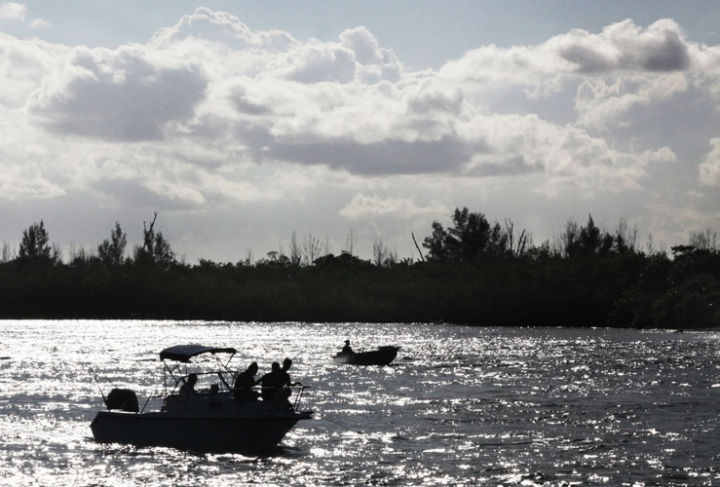INDIAN RIVER COUNTY — Annual business revenues of $93 million, $48 million in annual income for businesses and residents, an estimated 970 local jobs, and about $8 million in state and local tax and fee revenues – these are the impressive numbers attributed to the Sebastian Inlet in a recent economic impact study.
With the current intense focus on the endangered Indian River Lagoon, it is of special importance to understand the critical role that the inlet plays in the ecological health of the lagoon, which has an estimated annual value to Indian River County residents across all categories – recreation, real estate, business, employment and tax revenues – of about $380 million.
The “Regional Economic Impact of the Sebastian Inlet” study, conducted by Cardno ENTRIX, an environmental consulting company based in Tampa and prepared for the Sebastian Inlet District, is therefore particularly timely, and provides vital, occasionally surprising, data.
As the entity responsible for ensuring the inlet remains navigable for boaters, the district sponsored the study to measure the inlet’s regional economic impact.
The Sebastian Inlet District was created by the Florida legislature in 1919 to maintain a navigable channel between the ocean and the lagoon.
The inlet, one of the premier saltwater recreation areas on Florida’s east coast and one of only five navigable channels connecting the lagoon to the ocean, attracts hundreds of thousands of visitors each year. It provides ocean access for boaters, and supports aquatic ecosystems and fisheries by allowing salt water to flow into the lagoon to mix with fresh water from inland water bodies.
The inlet supports the region in three major areas: the Indian River Lagoon’s marine ecosystems, recreation and property values.
The lagoon’s hydrology depends on the relationship between salt water that enters through the inlets and fresh water discharges into the lagoon from inland streams, canals and rivers, as well as the actual shape of the lagoon in terms of width and depth. Salt water influx is vital to the lagoon’s biodiversity.
The inlet directly supports seagrass colonies, also called marine prairies, which, in turn, support numerous species of fish, crab, shrimp, sea turtles, and other marine wildlife that generate an estimated $19 million annually to lagoon fisheries.
After the permanent opening of the inlet, the Florida Fish and Wildlife Conservation District estimated that seagrass acreage has tripled from the 1943 figure of 1,325 acres.
The study determined that the total value of seagrass in the vicinity of the inlet is about $395 million.
If the district did not keep the inlet navigable, recreational boaters who now use it would be forced to travel to either the Cape Canaveral or the Ft. Pierce inlets at a total annual cost of $6.4 million or an extra $700 per boater to reach the ocean.
Boaters would have to choose between spending the extra money and time, take fewer ocean trips or permanently relocate to the nearest navigable inlet.
All these choices would negatively affect the local economy; boaters spend an average of $160 per trip on fuel and sundries.
If the inlet were not navigable, boating activity and business revenues from offshore and near-shore fishing would decline between 50 and 95 percent.
Estimated decline in non-fishing boating is “lower but substantial” – in the 20 to 50 percent range.
Marinas fear a decline of 80 percent, charter operation and marine trades 40 percent, and hotels and restaurants about 20 percent of annual revenues.
The inlet also has a significant impact on property values – approximately $1.8 billion for waterfront homes within about 15 miles north and south of the inlet.
Among the features home buyers look for are recreational and environmental amenities. Proximity to the inlet is a valuable feature of the local property market in the Sebastian area.
Real estate professionals overwhelmingly agree the inlet is a fundamental component of local property values. They expect a decrease in property value of as much as 20 percent for waterfront properties if the inlet were not navigable.
Based on an analysis of 2012 property values, the inlet’s estimated impact on property values is about 7 percent of total assessed value in Indian River County.
Cardno ENTRIX specializes in Water Resources Management, Natural Resources Management, Permitting & Compliance, Environmental & Natural Resource Liability Management, Economics and Decision Sciences, and Health Sciences, with over 25 full time economists who hold doctoral, masters or M.B.A. degrees.
The entire 80-page report – Sebastian Inlet Economic Study, SID Final Report 2013.pdf – can be found on the District website, www.SebastianInletDistrict.com.

